Kandahar – From the Heartland of the Pashtuns
“Everything here is expensive. But human life is cheap”
Kandahar, the second biggest city of Afghanistan, had been lingering in the legends of the country since centuries ago. The description of old folklores about the heatwaves, about the tough desert, and about the hospitality of the Pashtun tribes are still up to date, but no doubt, the prolonged wars and the spread of fundamentalism has changed the face of the city.
Living in Kandahar at this peak of the trend “war on terror” is overwhelmed by the concern of security problems. Suicide bombs can happen anywhere, and random shootings on street may deliver hot bullets just next to your feet. Taliban is the one who is always blamed to be the cause of everything, but nobody does really know who was the real actor behind all of the terrors. The politics in Afghanistan is complicated. Not only religious extrimists (thus those who always lay religion as the excuse of everything), manyu foreign nations also have importance and play in Afghan internal politics.
The Kandahar life has changed since, and starting from the end of 2004, the situation has only been worse and worse. Many local dwellers even are not dare anymore to return to their home villages in the province and prefer to stay still in the city, inside their house compound surrounded by concrete high walls and heavily arm guarded. The high risk people are the foreign nationals, and also those Afghans who works for government offices and foreign NGOs. One among the days I was there, there were two foreigners being kidnapped, and one of them was a Saudi Arabian national. Being clean shaved is also vulnerable to death penalty.
A man, clean shaved, who was travelling through the southern highway in a car was stopped in the middle of his journey in Helmand province. The southern highway of Afghanistan connects Kabul and Herat, passing through dangerous provinces of Zabul, Kandahar, Helmand, and Nimruz. the road from Kabul to Kandahar is in tip top condition, smooth and fast. The 800 km distance can be covered in about 7 hours of journey in public bus. The Americans had worked hard for making this possible. But half of the way between Kandahar and Herat was not completely repaired yet and the bandits of the area were notorious since centuries ago. The man, accidentally was clean shaved, and accidentally was stopped by those “religious rebel movement” mobs. He was asked whether he was a man or a woman. If he was a man, he should explain why he didnt grow beards. So the mobs made a hole on each of the man’s ears by a knive, and then put a padlock through the hole on that ear, and locked it . Now he had an earing of huge iron padlock. The mobs said, OK now you look better as a woman, you can go!
Abdullah Ilham, a freelance journalist for Pajhwok Afghan News agency – the biggest news agency in the country, cannot be luckier. He worked in Nimruz, the western neighbour of Helmand. He just got a new job promotion in Badakshan province, far in the north. That day, 4 July 2006, he started his day happily from Nimruz, wishing to arrive in Kabul at the afternoon, and then reach his hometown in Wardak province the day after for a happy celebration. But life is not as beautiful as he thought. The Toonace (minibus 4WD) he took was stopped by the infamous looters of the southern highway, when passing through the damaged road in Helmand province. His 1200 dollars cash and some thousands of Afghanis, a suitcase full of documents and clothes, mobile phone, and even watch, were completely looted. Clean. He came penniless to the room of Saeed Zabuli – another Pajhwok journalist covering Kandahar areas, with only one shirt sticking to his body. Plus his life. And that latter, the most precious possession of him, made him feeling grateful to his luck.
Helmand, at this moment, is the center of the movement of the Taliban, and also the main warfield of the alliance troups on their war on terror. Kandahar, Helmand’s eastern neighbour, is slightly safer. Just slightly. Bombings are common, and as a Kandahari man told me, “Everything here is expensive, but human life is cheap!”
It was on July 2, 2006, just before the dawn, when I first experienced he blast of Kandahar. I was talking with a Malaysian journalist friend of mine in a compound surrounded by high walls. This is our safe sancturary in Kandahar. Then suddenly there was a blast with some little quakes. I thought it was bomb.
“Dont worry, it’s just a training” said my friend. There was a home base of the army nearby and they often do some training with explosions and shootings.
But it was indeed a bomb. It happened in front of the governor’s house, killed 1 person and wounded 6 others. A Kandahar friend of mine gave me the information with plain expression, as it was not an important event to cause a terrified reaction. Bombings and killings like this is an ordinary thing in Kandahar, which happen on average at the frequency of every other day. The impact of listening the news of event like this, is comparable, or even less, than the impact of Indonesians hearing the news of the stealing of one of the chicken of the neighbour. It might be a surprise for merely half a second, “ah, uh”, and after that, the life goes back to normal.
There is a common wisdom in war areas: the safest place is the most dangerous place. If you happen to be in Kandahar, always remember not to hang around the police or the army. On July 3 2006, along the commercial center road of Kandahar, the Shar-e-Nao area just west of Shahidan Chowk (the martyrdom square), three men on motobike shot randomly on the street. Their target was the police, but they might easily kille any towndwellers who were unlucky enough to be in that area. But it was only a random shooting from a moving vehicle. They didnt kill any, and they were caught immediately. The street photographers of Kandahar, those who make ID card photo with century old cameras, went back to their work again after the incident, as nothing had happened.
Curiosity also might kill you in Kandahar. when seeing a bomb blast, it’s better not to go closer to see what was blasted. There is always the possibility of the second blast. And this possibility is not slim. But people never learned. Every single blast usually attracted some people with high curiosity to observe the bombs, before finding themselves as the additional victims of the blast, due to the second, third, fourth,… blasts.
Still, after events like this, life goes back to normal very fastly, just as nothing had happened.
It was not nothing, but it was not something either. The Kandahar based journalists dont go around to get the news. Many of them, local Afghan journalists from big agencies like APP, BBC, and Pajhwok, made their base in Noorjahan Hotel in Shar-e-Nao area. They dont think that it’s essential to risk their life to cover news like this, as it’s not anymore shocking big headlines. Staying in hotel, share the news from other journalist of other agencies, making confirmation by calling the police departments and goverment offices per telephone, is enough. This what in Indonesian media called as “warnet” and “wartel”(warnet = wartawan internet – the internet journalists. wartel = wartawan telefon – the telephone journalists. warnet also means internet cafe and wartel means public phone office in the Indonesian language), is the way how the journalists in war areas like this work. This is more due to the security problems. And those blasts are not news anymore. It’s just like chicken theft in Indonesia.
Maybe it’s only Iraq, the place on earth which posseses bigger danger than Kandahar and southern part of Afghanistan. The main targets are foreigners, the governments, and also locals who work for the foreign NGOs. Many organizatins are pulling out of the area and those who still survive listen obediently to the information provided by ANSO and UNAMA, the UN organizations responsible for the security of the area (mainly concern about the foreigners and foreign NGOs). They told the NGOs to keep changing their route when travelling in the city with the cars, so that the terrorists would be confused to direct their attacks. When the ANSO said it was not a safe day and everybody should stay to the basecamp, the NGOs staff will spread the news to everybody concerned. Something might happen, something might happen not. Just like that day, 9 July 2006, there was a warning from ANSO saying that “something” might happen. They didnt explain what “something” was, and this kind of uncomplete info is more frightening. The night before, friday 8 July 2006, the police just caught all Talibs, from young to old, of all of the maddrasas in Kandahar city, no matter whether they committed crime or not. This kind of random caught, without determining who was guilty who was not, just created a deeper hate towards the so-called security keepers.
Her name is Lam Li, a Malaysian ex-journalist who is wishing to get a job in Kandahar. She has delivered many applications to the organizations like UN, ANSO, UNAMA, etc in hope to get a job, and thus learn the way of working of these organizations poured by limitless number of dollars but has brought not much improvement to Afghanistan. Her applications havent brought any positive answers yet. She has been in Kandahar for two months, waiting. Her passport is almost filled by Afghan visa extension stickers, and all emphasized by the heavy place of issue, “KANDAHAR”. Extending visa in Kandahar also means to experience the security procedures unique of the city.
The ministry of foreign affairs is located not far from the governor’s house. It was surrounded by thick walls. Just like any other government offices and those of NGOs, this office is also not signed. No sign board at all, and jsut could be any other buildings. Only locals know what office is where. This is also a safety procedure. The car was thoroughly checked by metal detector, all of passengers should get out and body searched by the guards. When everything was OK. the car would be allowed to pass through the gate barricade to the parking lot. And it is still a distance to walk to the office. The guys working in the office were all less than 20 years old, and one guy, might be due to his young age, misunderstood Lam Li (31 years old) as the mother of mine. The next procedure was to go to the police station to receive bank slip. The police station was located near Shahidan Chowk. The check here was also strict, as the station once had been suicide bomber target when the Afghan army was also based there. Again, the old man of the police station office thought Lam Li was my mother. Lam said it was better for her to commit suicide. The officer apologized and offered lunch.
The next procedure was paying the fee to the bank, which was somewhere next to the Shahidan chowk. It was more furstrating due to the ineffeciency of works. In total for visa extension like this, one needs days of hard works.
It is not fair to talk only about the negative sides of Kandahar. This is also a lovely city, despite of the heavy summer heat. The temperature rose slowly day by day when I was there, from 45, then 46, then 48, and once it was 49 (all in centigrade). Why Kandahar is so hot? The legend says that it was Baba Farid, the holy Sufi saint, who punished Kandahar due to the inhospitality of the people. He begged for food in the bazaar but nobody took a pity on him. He was angered by the attitude of the town dwellers, he catched a fish from the river, and rose it to the sky. The sun came down slowly, grilled the fish. The fish became eatable, but the people became corpses. This explained the unforgiving heat of summer in Kandahar. The heat in Kandahar became more unbearable these days, as electricity has getting very unreliable, after the Taliban attacked the generators in Helmand province.
Despite of the warnings, I ventured into the alleys of the city’s old bazaar. There are four main quarters: Herat Bazaar, Kabul Bazaar, Shah Bazaar, and Shikarpur Bazaar. All meets at a junction named Chor Suq. The bazaar is hardly distinguished from any other bazaars, except that most men had beard and turbanned, and almost all women are in burqa. Among any other Afghan cities, Kandahar might be the most traditional and conservative. Deep in the bazaar there is hidden the treasures of Kandahar: the Cloak and the Hair of the Prophet Muhammad (PBUH). The cloak of the Prophet is kept in the Kherqa Sharif mosque, and the Hair is in Jame Mui Mobad mosque nearby. The cloak of the prophet is rarely shown to public. Mullah Omar, the leader of Taliban, took out the cloak and declared himself as Amirul Mumeeneneen (the leader of the believers).
Ghe great king of Afghanistan, Ahmad Shah Durrani (Ahmad Shah baba) also ruled his empire from Kandahar city. His beautifully decorated Mughal architectured mausoleum is also located deep in the bazaar, not far from the Kherqa Sharif. There were some young boys, turbanned, around the area. Unlike any other children who are happy with photography, they refused to be photographed. Maybe still traumatized by the capturing of all Talib students two days before.
The maze like bazaar also provided many surprises to those who are willing to venture inside. The “taktak bazaar”, so called because of the sound that overwhelmed the alleys, is the place where iron drums turned to be iron plates. It is also here where the iron garbages magically turned to be useful iron items. But those hittings, flat making, machine grilling, produced those “tak-tak” noise that nobody can maintain conversation when passing this area.
Mr. Khan, a non-uniformed police, agreed to take me around, to show me his beautiful city. He is a Pashtun, clean shaved, with cap and shawl. Unlike many other Afghans, he doesnt like to bite his shawl. I asked him to take me to Deh Khattay, the pottery making village south of the bazaar. We passed through the busy bazaar, took a rickshaw from Char Suq. He, as a proud Kandahari, assured me that Kandahar is a lovely city, khatar nist (not dangerous). We missed the pottery village, as Khan himself didnt know exactly where the pot factories were located. We walked back through the dry flat desert-like roadside. In this area there are many Pakistani workers, and Urdu still survived me (in fact most Kandaharis have spent their years of life being refugees in Quetta Pakistan, htat many of them understand Urdu, even if they barely speak the language properly)
Ismetullah is a potter in Deh Khattay. He and his four brothers work together in their family pot factory. A brother prepared the mud, the other made the model, and dried it under the sun. The other worked with the spinning machine (ran manually by his leg) before the pot to be dried on the roof and then kept in the cool room, before to be coloured and painted. A pot will give him 15 to 25 Afghanis, and in a month they can make up to 2000 pots. Wars havent destroyed the pot making tradition of the villagers here, but the number of factories had significantly decreased.
Khan, my guide cum bodyguard of the day didnt ask anything for me. It was me who completely received his hospitality. He invited me to his friend’s workshop, a tailor. The tailor said that Indonesian textile was of the best quality, cost 60 Afs per meter, while the Chinese compatriots cost only 20 Afs/meter. In the bazaar you may also find Indonesian sarongs (those labelled “sarung tenun kwalitas export”) and it’s beautifully sold at 200 Pak Rupees. The pakistani money is still widely used in Kandahar, only 110 km away from Pakistan.
I came to Kandahar with lots of hearsays and legends. All Pakistanis believed that Kandahar was city of gays, where man to man relations are common. Even people in Kabul warned me to be careful with Kandahar men. There is a teasing phrase which related to sexual habits of the people of Kandahar which I heard in Kabul. “Varyaad e kra“, means “let’s make him concious”, was said by five Kandahari men after a dinner with a very beautiful young boy, to make the boy realized about what fate he was going to experience. This story, showed that Kandaharis had gained a certain popularity of the doings among other Afghans and even as far as men in Pakistan. But I could not confirm by myself. In fact, I didnt get any sexual harassments at all when I was in Kandahar for about a week, largely partly because of the restrictions of travelling in the area, and the other reason that after the long wars and bad security problems, deep inside the heart, there are hidden the fears and supecions toward stragers.
Life has changed, the joy has shifted, the trust has evaporated, and as most Kandaharis prefer to blame, it was because of the security. “Afghanistan kharab,” said one of them. Afghanistan is destroyed.

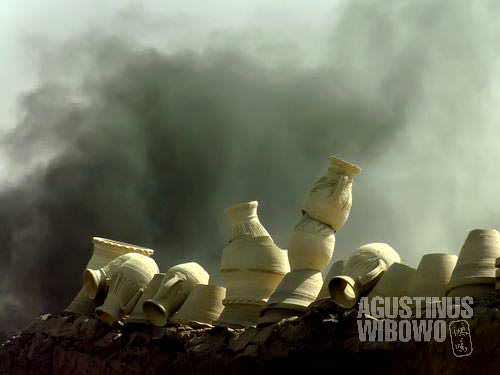
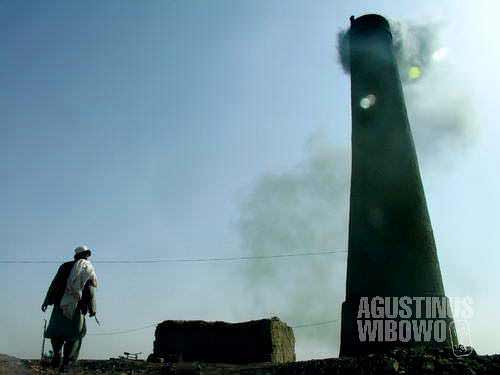

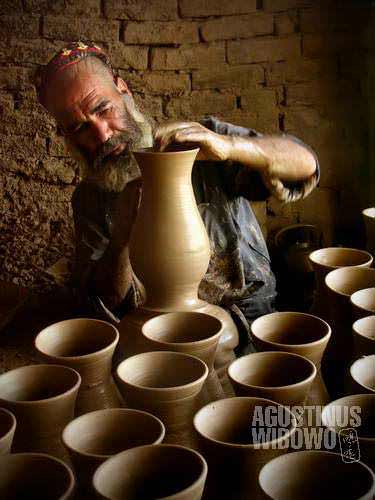
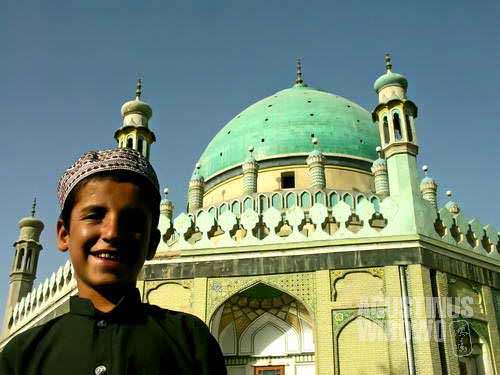
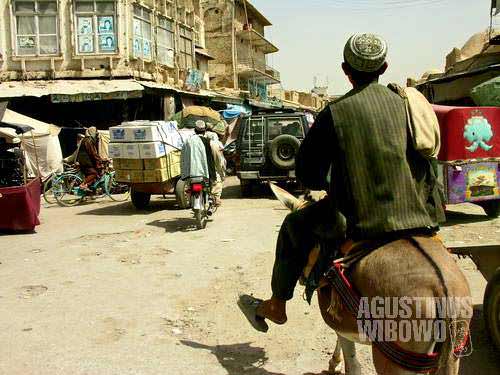

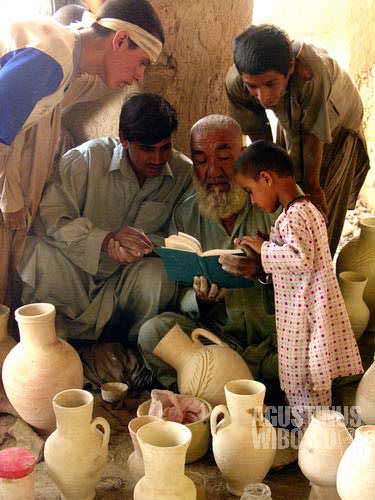
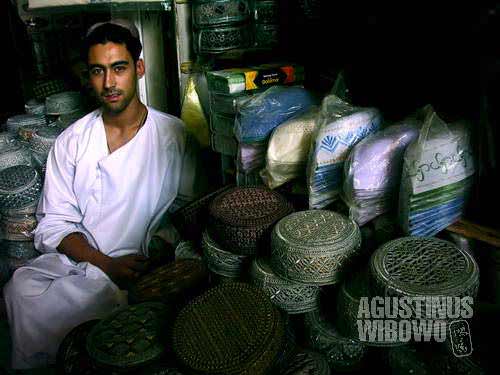

I made a try to translate this article into Chinese,and put it on the URL I leave here.You can have a look, and if there any mistakes or problems, please let me know:)
Wish you a good journey and take care of yourselves!
simon ZHANG,beijing
Wow, long but interesting article. Glad you are safe. I couldn’t access your Blog for a few days, until tonight.